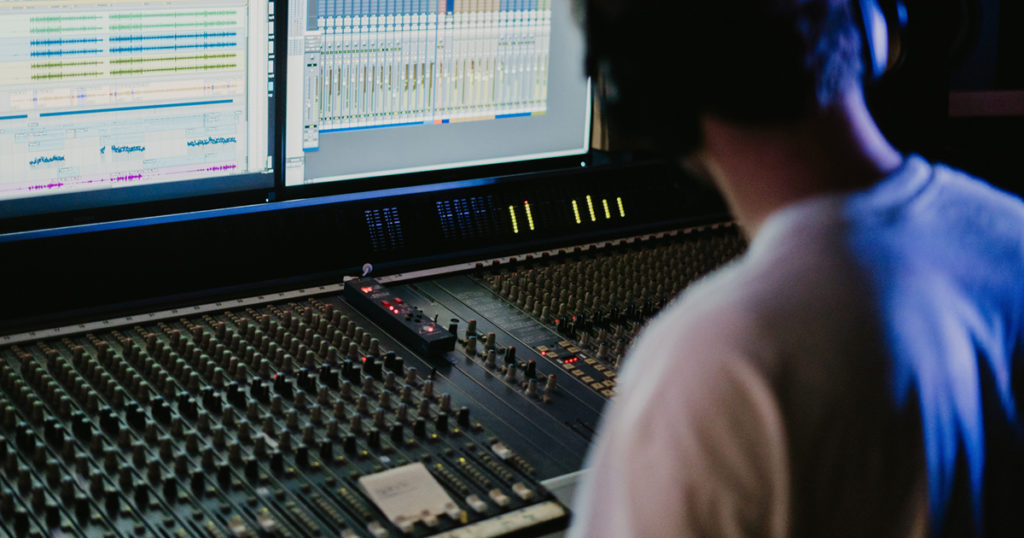+ Our brand new course with The Dillinger Escape Plan’s Ben Weinman teaches how to make a living in music without making sacrifices. Check out The Business of Uncompromising Art, out now exclusively on Soundfly.
A well-done cover song can do wonders for an artist. If the cover stays true to the original while bringing something new and unique, listeners can fall in love with your version of a song they already love. It’s a win-win!
So if you’re thinking of doing a cover, here’s how to arrange a new version of a song you love for your instrument. But first…
How to Choose the Right Song to Cover
When it comes to covering songs, the sweet spot is the overlap between what you like and what most people like. The song has to be well-known enough for people to want to hear your version of it — but it also needs to be a song you really like, preferably one that means something to you.
That way, when you’re arranging and producing this cover song, you’re excited about it. You put yourself into it. It’s difficult to do that with, say, a superficial pop song that doesn’t resonate with you.
Also, try to find a song in a different genre than the one you typically work in. For example, if you make rock music, you could cover a Frank Sinatra song. Or if you make folk/singer-songwriter music, cover a System of a Down song.
In either case, you’d obviously cover the song in your own style.
+ Learn production, composition, songwriting, theory, arranging, mixing, and more; whenever you want and wherever you are. Subscribe for full access!

How to Start Arranging the Cover Version
Once you’ve chosen a track to cover, it’s time to arrange your version of it. It boils down to three basic steps.
1. Look Up the Chords
Use a website like Ultimate Guitar to find the chords to the song. This allows you to just focus on the chords being played, not how they were played in the original. It also makes it easy to transpose the song to a key that fits your voice.
Then sit down with your instrument and play the chords in the way you naturally play chords when you’re writing. Pretend you wrote the song and you’re performing it for fans or friends.
Honestly, don’t overthink it. Just play your instrument.
2. Play the Song in the Style of Your Favorite Song
If you need a little inspiration for the arrangement, look up one of your favorite songs in the style and genre you make music in. Then play the cover song in that style.
For example, if I were to cover “Chop Suey!” by System of a Down, I’d want to do it in the style of Elliott Smith because I make similar music to him. So I could play “Chop Suey!” in the style of Smith’s most well-known song “Between The Bars.”
I could mimic the guitar strumming pattern and keep the production simple like he does. And for me, this would make sense because I grew up listening to both Elliott Smith and System of a Down’s top 2-3 songs. (Writing this is making me want to actually do it).
A couple of real-world examples of this are Rayland Baxter’s indie cover of rapper Mac Miller’s “2009.”
I also love Iron & Wine’s acoustic cover of the ’80s pop hit “Time After Time” by Cyndi Lauper.
For a ton more examples of covers done by metal bands, check this out!
+ Read more on Flypaper: “8 Ways to Turn a Cover Version Into Something Original.”
3. Make One Interesting Change
Other than playing the cover version in your own style, try to keep the song pretty much as it was originally recorded, while changing one thing.
Meaning, keep the structure and melody the same so people can easily sing along with it. But then try changing one small thing, like a new chord change or slight melody variation during one part.
You don’t have to do this, but it can add a nice little surprise for the listener.
How to Legally Release Your Cover Song
Before you release your cover version, you have to “cover yourself” legally (see what I did there?). You have to obtain a mechanical license before releasing the song.
Fortunately, you have a few options for getting this license and they’re all easy:
- Release the song through a music distributor that obtains mechanical licenses for you (I’ve used Soundrop)
- Use Easy Song (1-2 business days, license for under $15)
- Use Songfile (license for $16)
For the full process to legally protect yourself when releasing a cover song, check out this post, and look into how The MLC can help you for free. And for more information on royalties, licensing, and revenue generation through your music, check out Soundfly’s free course with Ari Herstand, How to Get All the Royalties You Never Knew Existed.
After you figure out how to arrange the cover song on your instrument, then it’s time to start recording the elements. Good luck with everything!
Don’t stop here!
Continue learning with hundreds of lessons on songwriting, mixing, recording and production, composing, beat making, and more on Soundfly, with artist-led courses by Ryan Lott, Com Truise, Jlin, Kiefer, RJD2, and Kimbra: Vocal Creativity, Arranging, & Production.




